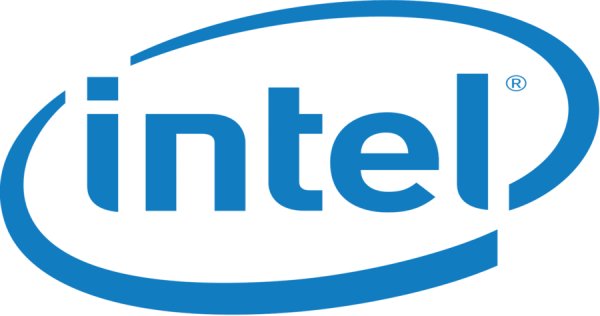The perpetual cat-and-mouse game between cyber attackers and defenders takes a new turn with the emergence of the Pathfinder attack. This sophisticated exploit, akin to the infamous Spectre vulnerabilities, poses a significant threat to the security of Intel CPUs, potentially compromising encryption keys and leaking sensitive data processed by popular libraries. In this blog, we delve into the intricacies of the Pathfinder attack, exploring its mechanisms, implications, mitigation strategies, and the broader implications for cybersecurity.
Understanding Pathfinder: The Anatomy of an Attack:
At the heart of the Pathfinder attack lies a deep understanding of the intricacies of modern CPU architectures, particularly the branch predictor found in Intel CPUs. Researchers from academia and industry have uncovered vulnerabilities within this crucial component, enabling attackers to manipulate the Path History Register (PHR) and induce branch mispredictions. Through this manipulation of speculative execution, attackers can coerce victim programs into executing unintended code paths, breaching isolation protections and accessing privileged data such as encryption keys and secret images processed by libraries like libjpeg.
Implications of the Attack: Unveiling the Potential Damage:
The ramifications of the Pathfinder attack extend far beyond mere theoretical vulnerabilities. By extracting AES encryption keys and leaking secret images, attackers can compromise the confidentiality, integrity, and availability of critical data assets. This represents a significant risk for organizations across various sectors, from finance and healthcare to government and beyond. Furthermore, the attack's lineage from the Spectre vulnerabilities underscores the persistent threat posed by evolving cyber exploits, necessitating a proactive and multifaceted response from the cybersecurity community.
Response and Mitigation: The Race Against Time:
In response to the discovery of Pathfinder, Intel has issued advisories acknowledging the threat and recommending previously deployed mitigations for Spectre v1 as potential safeguards. However, the complexity and adaptability of the attack raise questions about the efficacy of existing mitigation strategies. While these measures may offer some level of protection, they may not be sufficient to fully address the underlying vulnerabilities exploited by Pathfinder. As such, a concerted effort is required to develop robust and adaptive mitigation techniques capable of thwarting both current and future variants of the attack.
Collaboration and Knowledge Sharing: Fortifying Defenses Against Pathfinder:
In the face of evolving cyber threats like Pathfinder, collaboration and knowledge sharing among industry stakeholders are paramount. By pooling resources, expertise, and insights, organizations can enhance their ability to detect, prevent, and mitigate attacks. This collaborative approach extends beyond traditional boundaries, encompassing partnerships between academia, industry, government agencies, and cybersecurity practitioners. Through initiatives such as information sharing forums, joint research projects, and coordinated response efforts, the cybersecurity community can strengthen its collective defenses and stay one step ahead of adversaries.
Investing in Research and Innovation: Charting a Path Forward:
To effectively combat threats like Pathfinder, sustained investment in research and innovation is essential. This entails exploring novel techniques for identifying and mitigating vulnerabilities in CPU architectures, developing advanced detection mechanisms for detecting exploit attempts, and enhancing the resilience of critical systems against sophisticated attacks. Furthermore, fostering a culture of curiosity, experimentation, and collaboration within the cybersecurity community is vital for driving progress and staying ahead of emerging threats.
Educating and Empowering the Next Generation: Building a Strong Foundation:
As the cybersecurity landscape continues to evolve, it is imperative to educate and empower the next generation of cybersecurity professionals. By providing comprehensive training, hands-on experience, and mentorship opportunities, we can equip future defenders with the skills, knowledge, and mindset needed to tackle emerging threats like Pathfinder. This includes fostering interdisciplinary collaboration, promoting ethical hacking practices, and instilling a deep appreciation for the importance of cybersecurity in safeguarding digital ecosystems.
Conclusion: Navigating the Path Ahead:
As we conclude our exploration of the Pathfinder attack and its implications for Intel CPUs, it becomes abundantly clear that the cybersecurity landscape is evolving at a rapid pace, presenting new challenges and threats to organizations worldwide. The emergence of Pathfinder, a new Spectre-style vulnerability targeting high-performance Intel CPUs, underscores the critical importance of vigilance, collaboration, and innovation in the face of evolving cyber threats.
At digiALERT, we recognize the severity of the Pathfinder attack and its potential impact on data security and confidentiality. As a leading provider of cybersecurity solutions, we are committed to empowering organizations with the tools, knowledge, and expertise needed to mitigate the risks posed by such advanced threats. Through our comprehensive suite of threat detection, prevention, and response capabilities, we stand ready to help organizations bolster their defenses, safeguard critical assets, and stay ahead of emerging threats like Pathfinder.
Our approach to cybersecurity goes beyond reactive measures; it encompasses proactive threat intelligence, continuous monitoring, and adaptive defense strategies designed to anticipate and mitigate emerging threats before they can inflict harm. By leveraging cutting-edge technologies, industry partnerships, and deep expertise, we enable organizations to navigate the complex threat landscape with confidence and resilience.
As we embark on this journey together, let us remain vigilant, proactive, and collaborative in our efforts to defend against cyber threats like Pathfinder. By working together, sharing insights, and harnessing the power of innovation, we can strengthen our collective defenses, safeguard our digital ecosystems, and pave the way for a more secure future.
With digiALERT by your side, you can navigate the path forward with confidence, knowing that you have a trusted partner dedicated to protecting your organization from the ever-evolving cyber threats of today and tomorrow. Together, we can turn the tide against Pathfinder and ensure a safer, more resilient digital world for all.







